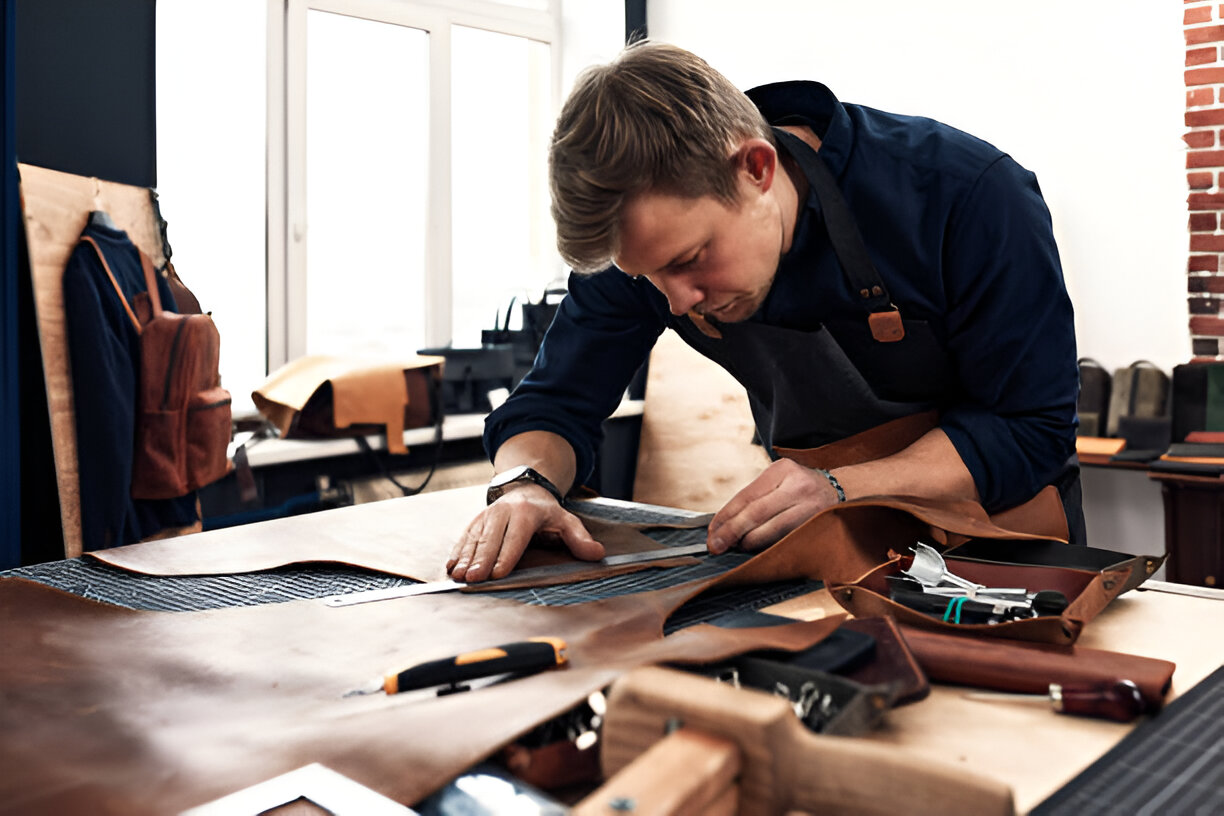
Leather crafting has seen a revival in recent years, especially in cities like Singapore. With a growing interest in handmade goods and sustainable fashion, more people are signing up for leather making workshops. These workshops provide a hands-on experience, allowing individuals to understand the intricate process behind crafting leather items.
Whether you’re a hobbyist, a creative explorer, or someone looking for a new experience, leather workshops offer something unique. Here’s everything you need to know before attending one in Singapore.
Understanding Leather Crafting
What Is Leather Crafting?
Leather crafting involves designing, cutting, and assembling pieces of leather to create usable items like wallets, card holders, and keychains. Traditional techniques, such as hand stitching and edge finishing, are often taught in workshops. The aim is to offer a glimpse into the world of artisan craftsmanship.
Materials Used in Workshops
Most leather workshops in Singapore provide vegetable-tanned or chrome-tanned leather. These materials vary in texture, durability, and flexibility. Tools such as pricking irons, mallets, stitching awls, and burnishers are commonly used. Participants typically get to use high-quality tools under professional guidance.
Skills You Will Learn
You’ll pick up a range of skills including measuring, cutting, punching holes, saddle stitching, and edge burnishing. More advanced sessions may include dyeing, embossing, and pattern making. These skills are not only practical but also offer a meditative, hands-on experience.
Choosing the Right Workshop in Singapore
Types of Workshops Available
In Singapore, workshops cater to different experience levels. Introductory sessions are usually short, focusing on basic projects like key fobs or name tags. Intermediate workshops may last a few hours and involve crafting wallets or phone sleeves. For those who want to take it further, multi-session courses are also available.
Duration and Pricing
Most beginner-friendly workshops last between one to three hours. Prices vary depending on the complexity of the project and materials used. Generally, sessions range from SGD 40 to SGD 150. Multi-day courses are higher in cost but often include more extensive materials and instruction.
Group or Private Classes
You can choose between group classes or private sessions. Group workshops are ideal for social experiences and team-building activities. Private sessions offer personalized attention, ideal for deep learning or custom projects.
Preparing for Your First Session
What to Wear and Bring
Comfortable clothing is recommended as you’ll be working with tools and leather. Closed shoes are often required for safety reasons. Most workshops provide all necessary tools and materials, so you don’t need to bring anything unless stated otherwise.
Mindset and Expectations
Leather crafting requires patience and attention to detail. It’s normal to make small mistakes, especially as a beginner. The key is to enjoy the learning process and the satisfaction of creating something with your hands.
Workshop Environment
Expect a creative and hands-on environment. Workshops are often held in studio spaces designed to inspire creativity. Instructors guide participants step-by-step, making the learning experience both structured and relaxed.
Benefits of Attending a Leather Workshop
Developing a New Skill
Learning how to work with leather is not only fun but also rewarding. It provides a creative outlet and a sense of achievement. As you progress, you can take on more advanced projects or even start crafting gifts for others.
Sustainability and Slow Fashion
Making your own leather goods promotes mindful consumption. Instead of buying mass-produced items, you create something lasting and personal. It encourages appreciation for the time and skill behind every handcrafted product.
Community and Connection
Workshops are great for meeting people with shared interests. Many attendees find it refreshing to connect offline and collaborate creatively. Some workshops also host events or craft meet-ups for ongoing learning and networking.
Exploring Further in Leather Crafting
Advanced Workshops and Courses
After attending a basic session, many participants choose to explore further. Advanced workshops dive deeper into design, stitching patterns, and bag making. Some studios even offer custom projects tailored to your interests.
Setting Up a Home Studio
If you enjoy the experience, setting up a small workspace at home is possible. You’ll need basic tools like cutting mats, knives, needles, and stitching thread. Leather sheets and hardware can be sourced from local craft stores or online platforms.
Turning Passion into Craft
Some hobbyists eventually turn leather crafting into a small business or side hustle. With the rise of local markets and online platforms, there are opportunities to share your creations with others. It all starts with a single workshop session.